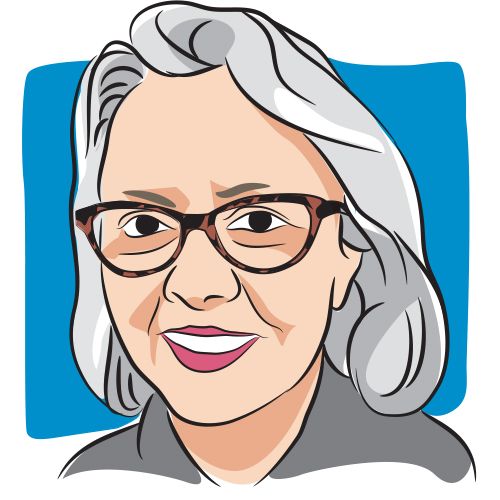Article
Looking to the New Year Is Filled With Concern For Patients and Survivors of Cancer
Author(s):
A recent visit to the doctor helped to put into perspective the concerns I have for the new year and COVID-19, especially for those struggling with breast cancer and its ramifications.
I had an annual visit with the cardiologist. It was the first time I’d been to the hospital since the breakout of COVID-19. I knew I’d need to wear a mask before entering the building since most businesses have adopted this policy since the initial spread of the virus.
Entering the building, I walked to the bank of elevators. Pushing the button, I chose the floor for my doctor’s office. When the doors opened, I saw 4 large blue circles on the floor inside. In each circle, the words social distancing appeared. I was caught off guard, realizing, even in elevators people weren’t allowed to be close.
Stepping inside, I obediently stepped on a circle. Right behind me, a man entered. I spoke to him through my mask offering a muffled, “Good Morning.” He did not respond although I knew he heard me. Our eyes locked and his fear was evident as he moved to the far corner of the elevator.
When we reached our destination, we both exited the elevator. I went one way and he the other.
Walking down the halls, I glanced into glass-windowed offices. Inside each were chairs spread apart, many of them numbered. Signs outside office doors notified patients of limited capacity and without an appointment, one could not be seen.
I went in to register, my temperature was taken, and I was asked if I’d been exposed to the virus or if I had any symptoms. Answering the negative, I took my seat.
When the nurse called my name, I was taken to an exam room where I waited for the doctor, before he entered the nurse explained I’d need an EKG. Since I’d never met this particular nurse before, I gave her a heads up. I said, “When you attach the leads, you’ll be surprised.” Her questioning look said it all, that’s when I informed her, I was a “flattie,” a breast cancer victim who’d chosen not to reconstruct. She laughed and said, “I’ve seen everything, honey. Don’t you worry.”
The EKG only took a few minutes and the doctor came in to perform his exam. I received good news and was told I didn’t need to return for a year. Before he left the room, the doctor and I talked.
“You know,” he said, “I had COVID-19 for 2 weeks in late March. It was terrible.” Wondering why he was sharing such personal information, I listened as he continued. “Are you going to get the vaccine when it is released?” I gave him an honest reply, “I don’t know.” He said, “You really should, you know. With your compromised immunity, you should be among the first to get it.”
I was surprised to hear I was considered to have compromised immunity, especially after six and a half years of fighting cancer, but he insisted it was true.
I left his office feeling conflicted. My doctor was advising me to receive the vaccine when it became available but I was concerned. In the first place, the vaccine had barely been tested. In the second place, I had lymphedema, which made receiving inoculations difficult. Instead of being able to receive vaccines in my arms, I needed to receive them in my buttocks. Most nurses gave me a hard time when I tried to explain.
I wondered if the majority of breast cancer patients were being advised to take the vaccine and if so, how many would comply?
I also wondered if many women might forego visiting their doctors during COVID-19? Would they skip having suspicious lumps checked for fear associated with catching the virus? And would all of this contribute to an increase in the number of breast cancer cases next year?
The new year is filled with uncertainty and while we wish we could see COVID-19 completely disappear; it seems it will be around for several more months. Will the vaccine offer hope? Should everyone receive it?
The decision is one that must be weighed individually but for those with compromised immunity, like those affected by cancer, it seems a no-brainer, especially when doctors recommend it.
For more news on cancer updates, research and education, don’t forget to subscribe to CURE®’s newsletters here.




